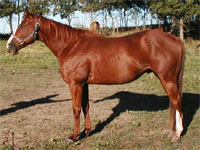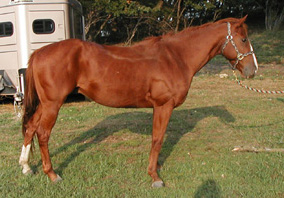Site Menu:
| This is an archived Horseadvice.com Discussion. The parent article and menus are available on the navigation menu below: |
| HorseAdvice.com » Diseases of Horses » Lameness » Diseases of the Lower Limb » Overview of Diseases of the Pastern » |
| Discussion on Over in the Pasterns, is this a term | |
| Author | Message |
| Member: Jamied |
Posted on Tuesday, Dec 13, 2005 - 11:06 am: I've had horses for over 30 years, and I've never heard of over in the pasterns. I've heard of over in the knee. Is over in the pasterns even possible?I sold a horse, and the new owner want to return him because he said, he's over in the pasterns, and he doens't like the musculoskeletal make up of the pasterns. I'm taking the horse back, but I have no idea what this means. |
| Member: Mrose |
Posted on Tuesday, Dec 13, 2005 - 11:37 am: I've never heard the term either. The pasterns could have a bad angle, come into the foot off center, or be too short or too long for what someone wanted to do with the horse,but never have heard of "over in the pasterns." Maybe this person doesn't have a lot of experience and is confused with the term "over at the knees," and wanted to sound like they knew what they were talking about when they refused the horse??Or, I guess you and I could just be in the darK! 
|
| Moderator: DrO |
Posted on Wednesday, Dec 14, 2005 - 8:04 am: Hello All,No you can have a horse over at the pasterns: this would describe a horse with very up right pasterns and in extreme cases, as sometimes seen in newborn foals, the pasterns are pushed forward and the foal may not be able to stand. This conformation represents contracted superficial digital flexors and can accompany over at the knees or when in combination with DDF contracture, club feet. DrO |
| Member: Mrose |
Posted on Wednesday, Dec 14, 2005 - 10:32 am: Shows what I know! I have never heard this term, although I have seen the conformation you describe. Thanks, Dr. O. I love this site as there's always something new to learn. I have never heard this term, although I have seen the conformation you describe. Thanks, Dr. O. I love this site as there's always something new to learn.
|
| Member: Jamied |
Posted on Wednesday, Dec 14, 2005 - 11:35 am: Thanks Dr. O. I can imagine this now that you describe it. I've probably never heard of it because the horse would be unusable. With what you have described, there in absolutely no way this horse is over in the pasterns. He has long pasterns that slope nicely in front and back. I just compared photos of his legs to the confirmation in some of my books, and he is nearly identical on the hind, and maybe a little too much slope in the front. He is extremely smooth to ride, and has never been lame. He's seven years old. Wouldn't a horse that was over in the pasterns be very hard to ride, if he could be ridden at all? |
| Member: Hwood |
Posted on Wednesday, Dec 14, 2005 - 12:19 pm: Jamie, do you think the fellow meant "down in the pasterns?Sometimes, the fetlock falls too far behind the hoof due to tendon/ligament weakness. Yes, I would think that a horse that is "over at the pasterns" would be very uncomfortable, because it would be like riding in a car with no shocks . . . but I can picture some horses with upright pasterns compensating by having more "spring" in their knees and hocks. I have been surprised more than once by evaluating a horse's leg conformation and imagining what riding the horse will feel like, and then finding that it feels quite different from what I imagined. |
| Moderator: DrO |
Posted on Wednesday, Dec 14, 2005 - 6:32 pm: To settle this question lets get some good photos from the side of the horse when standing square. Can you do this for us Jamie.DrO |
| Member: Jamied |
Posted on Thursday, Dec 15, 2005 - 4:07 pm: This is the best photo I can find, for what you asked for. This is the photo in my ad to sell this horse. I hope it is clear enough to answer the question.
|
| Member: Jamied |
Posted on Thursday, Dec 15, 2005 - 6:29 pm: Well, the guy brought him back today. He said he didn't like the "radical" angle on his front pasterns. Okay, so he doesn't know what over in the pasterns means. Well, he does now. Anyway, shouldn't he have been able to see the angle of the horse's pasterns from the photo? This photo is half the size of the one in the ad. And I think his legs and feet are easy to see. "Jack" is happy to be back, even if there is a foot of snow in his pasture. |
| Member: Hwood |
Posted on Friday, Dec 16, 2005 - 3:21 am: Jamie, from this photo, I do not see that the horse's pasterns are too upright . . . the left hind pastern seems rather straight, but that may be due to the leg postion being further back behind the horse. I can not see the pastern on the left front leg . . . it looks as though there is a bell boot on it or that it is a dark colored fetlock and pastern. |
| Member: Imogen |
Posted on Sunday, Dec 18, 2005 - 3:31 am: If anything and the photo isn't brilliant, the front pasterns look a bit low in angle and the front legs a little short compared to the rest of the horse but it doesn't look like he's standing on level ground so it's really not easy to tell. No major abnormality jumps out at me though about the front pasterns.Imogen |
| Moderator: DrO |
Posted on Monday, Dec 19, 2005 - 8:39 am: The horse does have a remarkably straight hind leg including the pastern in the photo but it is difficult to say if this is his conformation or just the way he is standing in this photo.DrO |
| Member: Jamied |
Posted on Monday, Dec 19, 2005 - 10:29 am: Maybe this is a better photo. He is leaning forward, but I don't think the shadows are so bad.
|
| Member: Hwood |
Posted on Monday, Dec 19, 2005 - 12:36 pm: Jamie, as far as I can see, his front pasterns seem okay, and this is a better photo of his left hind, which also looks normal. I can't quite make out his right hind from the fetlock down.Was the buyer talking about the horse's front legs? I really don't see anything that looks like a problem. He does slope off fairly steeply from his croup to his tail, but I have seen breeds of horses that look this way (some Standardbreds and TWH horses I've met) but he looks like a nice guy to me. Was the buyer a knowledgeable horseman or was this going to be his first horse? |
Horseadvice.com
is The Horseman's Advisor
Helping Thousands of Equestrians, Farriers, and Veterinarians Every Day
All rights reserved, © 1997 -
is The Horseman's Advisor
Helping Thousands of Equestrians, Farriers, and Veterinarians Every Day
All rights reserved, © 1997 -
